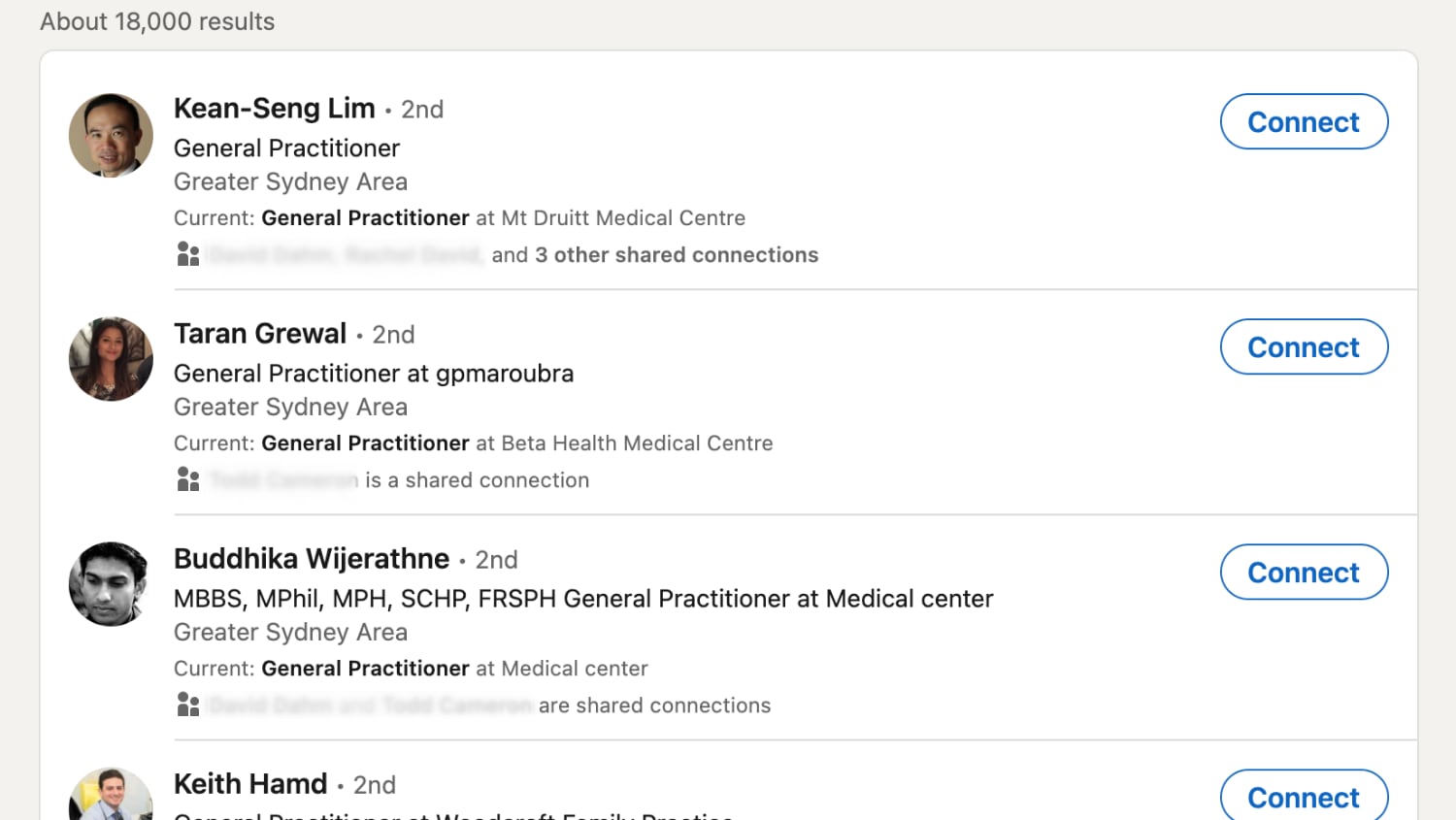GP blog
Set up a blog for GPs and multiply your GP referral stream
Set up a blog for GPs and multiply your GP referral stream

Kris Borgraeve
November 16, 2021
Why leading specialists are using a GP blog
GP blog basics for specialist doctors
If a general-practitioner blog was not on the agenda of your last Business Development meeting, take a moment to go over these basic facts. We will call it a GP blog for easy reference and what we are talking about is a blog section on your website that is targeting GPs or physicians, family doctors or general practices in your catchment area.
Critical question #1: Hey Kris, how would you know that GPs will take the time to find my blog and also read it?
Well, bear with me, in the Connect-Publish-Engage section below we will explain this. Trust me, they will find and read you.
The main reason to use a GP blog is to replace some of the traditional ways specialists would get referrals from general practitioners: networking, dinner events with PowerPoint presentations, or events organised by your associated hospital for general practitioners.
The GP blog can be promoted via email marketing, via LinkedIn or through a combined strategy. Ask us about integrated solutions to either use your existing GP-list or to start one from scratch.
Blog inspiration for doctors to become more visible
get more GP referrals
The concept of a blog creates criticism when we introduce it in workshops or webinars. Why? Because old concepts are ingrained in our understanding of what blogs are. They used to be communication tools used by millions to write about a hobby. From exotic birds to racecars, from red wine to South-East-Asian travel destinations. Blogs were introduced as online diaries.
With our matured internet usage and ecosystem, blogs can still be all of the above. In the context of a private health practice, we define a blog as follows:
- A blog page is in essence a quality content page, just like the other pages on your website.
- What distinguishes your blog page from a content page is that it is categorised as an item with a certain timestamp, a category and an author.
- That is why the blog article generally has a slightly more personal tone.
For example, as the author of this blog, this would be the place for me to tell you the story of this customer who started blogging, became 5 times more visible in Google search because of her well-chosen topics and was able to double her turnover in 2 years’ time.
Blogs work best when you have an editorial calendar. You would map topics that are related to your specialty and ask yourself ‘What is a good educational topic that allows me to tell a story so I educate and position myself as a leader?’. I know. It’s a long question. Creating that editorial timeline, and coming up with great blog ideas on a regular basis, creates a foundation for your leadership profile and your Google visibility.
Below, we will break apart the full cycle of an effective blog article: You publish it, you make sure you have a way to let your network know that it’s there, and you keep a strong focus on the outcome that you are after: a conversation with your network so you do more business.
I call it the Connect-Publish-Engage cycle and we will strip it apart so you can start reaping the benefits of this failproof online marketing strategy for the private practice.
In this article, we focus on reaching GPs. If you are interested in blogging for prospective patients, there is another great article in our Grow!-feed right here, on blog tips for doctors to attract more patients.
Connect, Publish and Engage with GPs on LinkedIn
use of linkedin for doctors
Your blog flourishes and creates unprecedented results once you have a clear vision on your list. If you don’t have an email list of physicians or GPs in your area who might want to refer to you, then LinkedIn is your next best avenue. Connect with all local GPs in your catchment area on LinkedIn and bear in mind that the ones who are on LinkedIn are the most receptive to all-things-digital (eg a blog).
Critical question #2: Hey Kris, how about all those doctors who are not on LinkedIn?
I tend to focus on the glass that is half-full here, knowing that building a relationship with 3,5 or 10 family practices changes the dynamics of your referrals in spectacular ways. Multiple customers of ours have confirmed that this makes blog and GP marketing via LinkedIn the single most effective add-on, once you have published a quality website with optimised content (SEO) to rank well in Google Search.
How does this work as an ecosystem? You prepare blog topics based on the most useful topics that family doctors have questions on. You could ask your connections what these most useful topics are. Then you carefully produce fully optimised blog pages (or you ask a medical marketing agency like Digital Practice). The next step is to post links to these quality blogs on your LinkedIn profile. In parallel with this – and as soon as you start preparing topics – you connect with GPs in your area.
A simple search will give you all the general practitioners in your area, and reaching out from your profile will create many new connections, provided your LinkedIn profile is optimised and clearly identifies who you are.

Building blog content for spectacular growth
blogging for SEO
- you are in business because you publish regular updates and
- that you must be an absolute leader because you consistently post blogs about knee replacement surgery, women’s health or gastroenterology. Needless to add that you will make Google happier by sticking to one of these three examples but I’m sure you got that.
Why a GP blog is like compounding interest
how to get more website traffic
Doctors often ask me about Google Ads versus content marketing.
This metaphor still does the best job:
- Advertising is like renting. You stop paying rent, and the space is no longer available for you.
- Content Marketing is building premium real estate in a great location. The rewards are a situation of compounding interest.
Translated to your medical website, every blog you add while respecting our best practices is a premium renovation and adds value to your digital real estate.
It won’t come as a surprise to you that we have seen practices double their turnover by implementing a solid long-term content strategy. A GP blog is a key pillar of this proven strategy and it sets you apart from what you would get from a junior one-man-band web designer.
Need help to get going?
GP blog
We help many specialist doctors build a strong, future-proof GP blog strategy. If you want to find out more about the potential growth you can create with a blog, book an obligation-free consultation to discuss your content marketing strategy.
- Tags: Referrals





